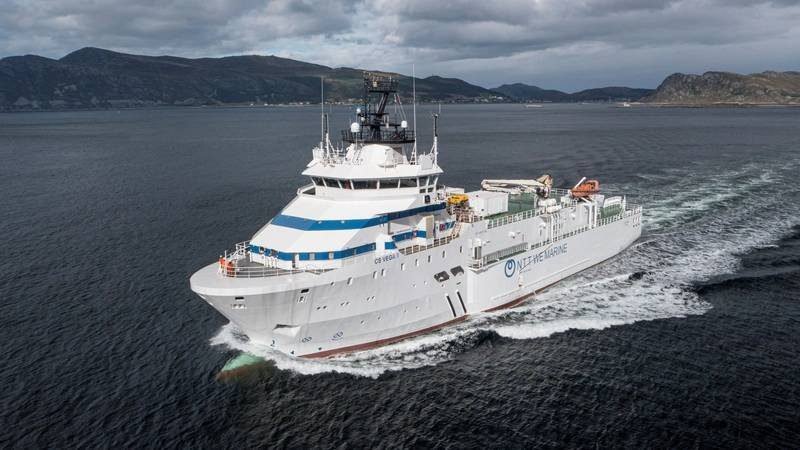Green Yard Kleven has successfully converted an 80-meter walk-to-work vessel into a cable lay and repair services vessel for NTT, a major telecommunications company in Asia. Originally built as an MT6007 seismic vessel, the ship was later transformed into a walk-to-work vessel for offshore wind operations. Now known as the Vega II, the vessel is set to undertake cable work in Asian waters, replacing the aging ship Vega in NTT’s fleet of cable ships responsible for installing and servicing underwater communication cables.
Significant modifications were made to the Vega II during the conversion process, including the installation of steel modules weighing over 600 tonnes, a new hangar for cable handling equipment, two additional deck cranes, a traverse crane, and large sheaves aft to guide the cable overboard. The ship now features three compartments for cable storage, overhauled engines, an upgraded DP system, and a fresh coat of paint in NTT’s colors. The yard prioritized sustainability by utilizing second-hand equipment and existing components, resulting in a reduction of 919 tons of CO2 emissions.
The cable lay equipment for the Vega II was supplied by English supplier Parkburn, while design and engineering were carried out by Marin Teknikk, the original designer of the vessel. Grieg Shipbrokers in Bergen and Aki Ace Offshore in Japan played key roles in connecting the shipowner, shipyard, and designer to facilitate the successful conversion of the vessel. By repurposing the existing hull and utilizing second-hand equipment, Green Yard Kleven estimates that at least 4,500 tons of CO2 emissions were saved compared to constructing a new ship.






